Optimize Efficiency, Cut Costs & Future-Proof Your Hospitality Operations
8 Essential Smart Hotel Kitchen Equipment for 2025
Why Hotels Need Smart Kitchen Equipment in 2025?
In recent years, technological advancements have sparked a significant revolution in hotel kitchens. The traditional hospitality industry is grappling with a 27% increase in energy costs and 15% food waste rates, largely due to outdated equipment. In contrast, smart kitchen systems have emerged as a solution to these pressing challenges.
By integrating modern technologies such as AI algorithms, smart kitchen equipment achieves more precise control. For instance, it reduces temperature fluctuations from ±5°C in traditional setups to ±0.8°C, ensuring consistent food quality. Regarding energy costs associated with old kitchen appliances, heat-recovery technology cuts gas consumption by 18%, while IoT sensors optimize refrigeration cycles for 30% energy savings - a substantial benefit for large hotel kitchen operations.
The difficult task of expanding traditional kitchen workspaces can now be easily addressed through modular designs. These designs increase workspace utilization by 33%, which is crucial for urban hotels with limited space.
With the global smart kitchen market projected to grow at 8-10% CAGR through 2025, upgrading to smart kitchen systems is no longer optional but a strategic imperative for the hospitality industry.
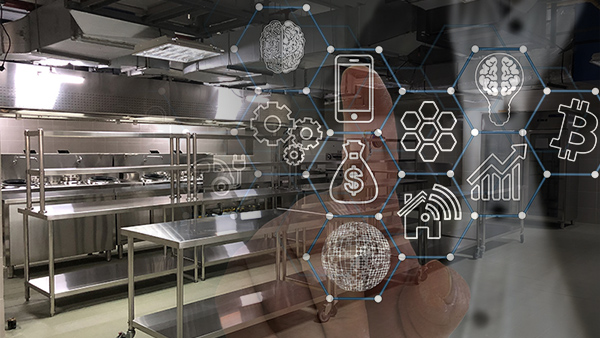
What Is Smart Kitchen Equipment?
Smart kitchen equipment is modern devices that streamline cooking and cleaning through advanced technologies like IoT sensors, AI algorithms, and automation. Smart appliances represent a significant evolution in kitchen functionality, offering several distinctive advantages:
Self-Monitoring Capabilities
Smart appliances incorporate real-time diagnostics to detect malfunctions, such as refrigerant leaks, and alert users immediately. This proactive monitoring ensures potential issues are addressed before they lead to costly repairs or food spoilage.
Food Safety Enhancement
Temperature monitoring systems continuously track conditions to ensure food safety standards. Staff receive immediate alerts if temperatures deviate from safe zones, helping prevent food-borne illnesses and maintaining compliance with health regulations.
Adaptive Learning
Machine learning algorithms analyze historical usage patterns to optimize cooking cycles. This adaptive feature ensures consistent results while potentially reducing energy consumption and operational costs.
Remote Accessibility
Smart kitchen equipment enables remote monitoring and control through smartphones, tablets, or computers. Users can adjust settings, receive status updates, and troubleshoot issues from anywhere, enhancing operational flexibility and efficiency.
The 2025 Essential Smart Hotel Kitchen Equipment List
After understanding the transformative potential of smart kitchen technology, it's clear that these innovations are no longer optional for hotels aiming to stay competitive. Below, we explore eight cutting-edge smart kitchen systems poised to redefine efficiency, sustainability, and precision in 2025—each backed by technical advancements and data to empower your hospitality operations.
1. AI-Optimized Combi Ovens
AI-driven combi ovens, such as Shinelong's Combi Oven Series, are revolutionizing hotel kitchens by merging steam, convection, and AI-powered load-sensing technology. Unlike traditional ovens that rely on manual adjustments, these systems dynamically calibrate cooking parameters (temperature, humidity, and airflow) based on real-time food volume and type. For example, Shinelong's model reduces cooking time by 20% while maintaining ±0.9°C temperature stability, ensuring perfectly seared steaks or delicate pastries every time.
Technical Edge:
Intelligent program: Machine learning analyzes historical cooking patterns and records over 1000 recipes to auto-adopt banquet mode.
Dual-Zone Control: Simultaneously bake and roast without cross-flavor contamination.
Applications: Ideal for high-volume banquet kitchens or resorts with diverse menus.
Adoption Tip: Coastal properties should opt for 316L stainless steel models to withstand salt corrosion.
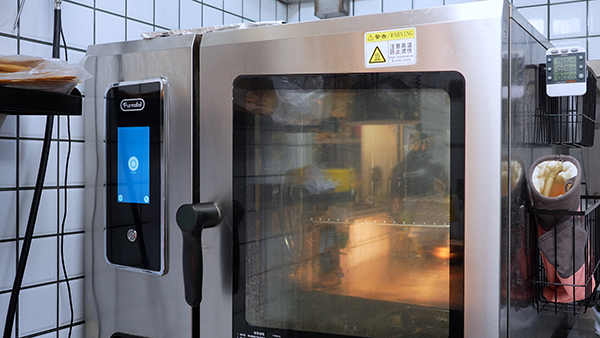
2. Smart Refrigeration Systems
Modern smart refrigeration units, like Shinelong's Furnotel Series, leverage Dixell thermostat and separate compressors to address longstanding challenges. Traditional units struggle with temperature fluctuations (±5°C), but Shinelong's triple-sealed PUF insulation locks cold air 40% longer, maintaining FDA-compliant 3°C even at 2,500m altitudes. For tropical resorts, hydrophobic coatings prevent condensation buildup, reducing maintenance costs by 30%.
Technical Edge:
Aerodynamic Ventilation: Reduces energy consumption by 22% through optimized airflow.
Self-Diagnostic IoT: Alerts staff about refrigerant leaks or filter replacements via mobile app.
Applications: Mountain lodges, beachfront resorts, or urban hotels requiring HACCP compliance.
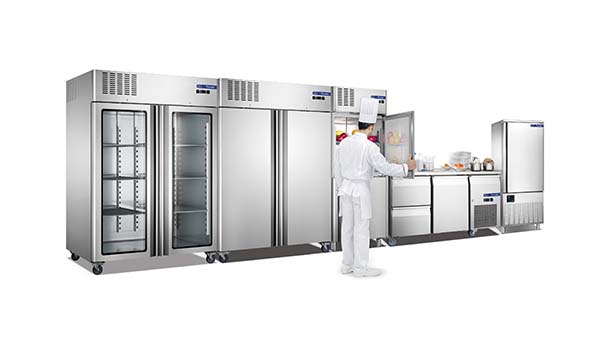
3. Robotic Food Prep Stations
Robotic prep stations combine axis arms with vision-guided slicing to automate tasks like vegetable dicing or meat portioning. Traditional manual methods incur 15% ingredient waste, but AI-driven systems reduce this to 3% while cutting labor costs by 35%. For instance, a luxury Dubai hotel reported 24% efficiency gains after deploying ChefBot for buffet operations.
Technical Edge:
Auto-Sanitization: UV-C lights sterilize surfaces between tasks, exceeding ISO 22000 standards.
ERP Integration: Syncs with inventory systems to track real-time stock levels.
Applications: High-turnover banquet kitchens or properties emphasizing consistency.
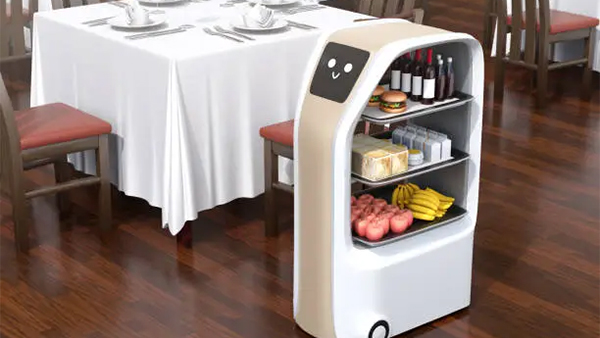
4. Smart Ventilation Hoods
Smart Ventilation Hoods uses AI to adjust fan speeds based on real-time cooking emissions, reducing noise to at least 55dB (quieter than a conversation) while cutting energy use by 35%. Traditional fixed-speed hoods waste energy during off-peak hours, but adaptive systems optimize airflow dynamically. For open kitchens, this ensures guest comfort without compromising air quality.
Technical Edge:
VOC Sensors: Detect smoke and grease particles, triggering instant filtration.
Heat Recovery: Redirects exhaust heat to preheat water, saving 18% gas costs.
Applications: Open-concept kitchens or properties in polluted urban areas.
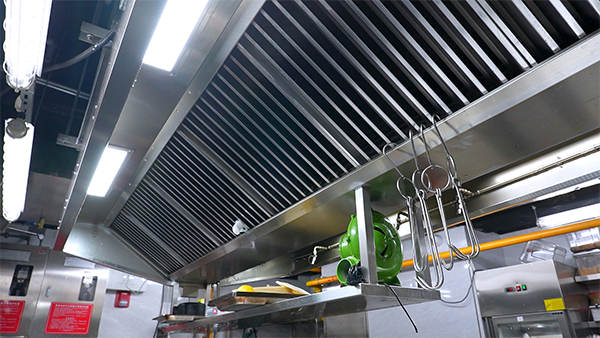
5. Autonomous Dishwashing Units
Modern automatic dishwashing equipment, which typically uses UV-C and electrolyzed water, can sanitize dishes in 90 seconds (compared to a 15-minute cycle), saving 12,000 liters of water per year. Conventional equipment often suffers from lime scaling, but equipment equipped with self-cleaning nozzles and 304-grade steel pipes can withstand hard water damage, making it ideal for Mediterranean resorts.
Technical Edge:
Modular Design: Stack units for banquet-scale operations.
Leak Detection: IoT sensors alert staff to issues before downtime occurs.
Applications: Eco-certified hotels or cruise ship galleys.
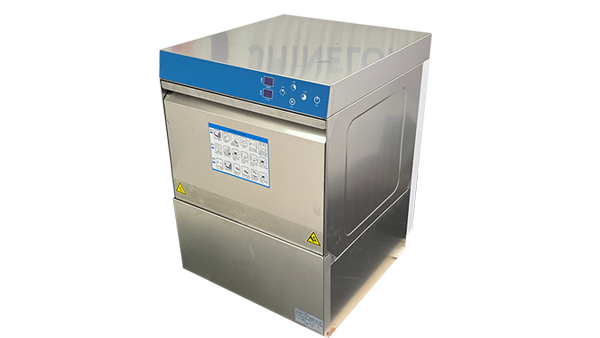
6. Precision Induction Ranges
With German EGO thermostats, Shinelong's 700/900 Series achieves ±1°C control, reducing oil splatter by 50% compared to gas ranges. Traditional wok stations risk flare-ups, but induction's zone synchronization enables safe, high-heat stir-frying. A Bangkok hotel using FireMaster reported 28% lower ventilation costs due to reduced smoke.
Technical Edge:
Load-Sensing Burners: Adjust power output based on pan size.
Quick-Clean Surfaces: Electropolished stainless steel resists stains.
Applications: Asian cuisine-focused hotels or properties with open kitchens
7. AI-Powered Inventory Management Systems
AI-driven inventory systems are redefining resource optimization in hotel kitchens through machine learning algorithms and IoT-enabled sensor networks. These platforms integrate real-time data from refrigeration units, POS systems, and supplier databases to:
Predict Demand: Analyze historical consumption patterns + seasonal trends (e.g., 23% higher seafood orders during summer in coastal hotels) with 92% forecast accuracy.
Prevent Waste: Multi-spectral imaging sensors detect early-stage produce spoilage, reducing perishable waste by 28% (vs. 15% industry average).
Automate Replenishment: Sync with ERP systems to auto-order staples when stock dips below safety thresholds, cutting emergency procurement costs by 35%.
Technical Architecture:
Computer Vision: 3D depth cameras measure ingredient volumes with ±2% margin of error.
Blockchain Traceability: RFID tags track batch expiry dates and supplier compliance (HACCP/ISO 22000).
Applications:
Resorts: Manage multi-outlet inventories (beach bars, fine dining) through centralized dashboards.
Boutique Hotels: Compact systems for kitchens under 50㎡ with cloud-based analytics.
Adoption Strategy:
High-Volume Properties: Implement predictive models trained on 12+ months of F&B data.
Remote Locations: Opt for edge computing devices with offline functionality.

8. Modular Cook-Chill Systems
Modern cook-chill technology enables HACCP-compliant batch production through rapid temperature drop protocols. Advanced systems achieve 90°C→3°C in ≤90 minutes via:
Multi-Stage Cooling:
Active Blast Chilling: Turbo fans force -18°C air at 12m/s velocity.
Phase-Change Plates: Paraffin-based thermal batteries maintain 0°C during power outages.
Hybrid Sanitization: Ozone + UV-C treatment eliminates 99.97% pathogens (per NSF/ANSI 3-A testing).
Operational Advantages:
Texture Preservation: Ice crystal formation limited to <50μm (vs. 150μm in conventional chilling), preventing meat fiber damage.
Energy Recovery: Integrated heat exchangers recycle 65% of thermal energy to preheat cooking water.
Applications:
Convention Hotels: Prepare 500+ banquet plates 24hrs in advance.
Healthcare Hospitality: Meet strict nutritional guidelines for patient meals.
Implementation Guidelines:
Humid Climates: Specify corrosion-resistant evaporator coils (316L SS).
High-Altitude: Select units with dual-stage compressors for consistent 0°C at 3,000m.
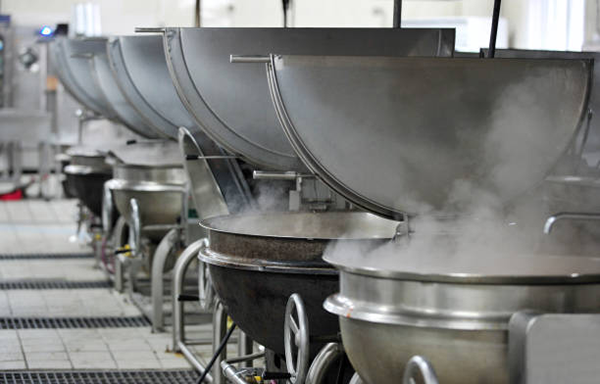
AI-driven kitchens, soon to be standard across 97% of hospitality venues, will leverage 5G-powered IoT for real-time equipment monitoring, predict maintenance needs, and ensure consistent food quality. Circular design principles will see heat-recovery systems recycling up to 85% of kitchen exhaust energy, reducing both environmental impact and operational costs. Perhaps most excitingly, hyper-personalization through AI algorithms will allow hotels to create customized menu options based on individual guest preferences and dietary requirements, enhancing satisfaction and loyalty.
For properties in challenging environments, such as coastal areas, investing in corrosion-resistant 316L stainless steel models will be essential for longevity and performance. The evolution of hotel kitchens into intelligent, connected spaces isn't just a trend—it's a strategic imperative that will define the next era of hospitality excellence.
- What is an example of a smart kitchen?A smart kitchen integrates advanced technology to streamline cooking and management tasks. For instance, McDonald's has implemented automated fryers and smart ovens in some U.S. locations. These devices reduce cooking times, lower labor costs, and ensure consistently high-quality food, thereby enhancing operational efficiency and customer satisfaction
- What is smart kitchen technology?What Is a Smart Kitchen? A smart kitchen utilizes Wi-Fi, Bluetooth, and AI technology to enhance everyday kitchen tasks. Its primary goal is to reduce manual labor, save energy, and improve the overall efficiency of the cooking
- What is smart technology in food processing?Smart technology in food processing refers to the use of robotics and automated systems that enhance precision, speed, and safety. These technologies take over repetitive and precise tasks, ensuring consistent quality, reducing human error, and protecting workers from hazardous conditions.
- What is the AI technology in the kitchen?AI technology in the kitchen uses intelligent algorithms to design efficient pantry layouts, maximizing storage and accessibility of food items.
- Are you the manufacturer?Yes, we are half manufacturer, half trading company. Manufacturing Furnotel brand equipment, trading for all kinds of kitchen equipment, especially turn-key solutions.
- What are integrated hotel equipment systems?Integrated hotel equipment systems refer to the interconnection of various technologies and equipment within a hotel, such as property management systems, HVAC, lighting, security, and access control, to operate as a unified system. This integration enhances operational efficiency, reduces energy waste, and improves guest experiences through features like automated energy management and centralized monitoring.
- What is the essential kitchen equipment list for a hotel?Essential kitchen equipment for hotels includes commercial ovens, refrigeration units, preparation tables, dishwashing machines, food processors, mixers, slicers, grills, fryers, steamers, and exhaust hoods. These items are crucial for food preparation, storage, and service in a hotel setting.
- How do smart kitchen apps work in hotel kitchens?Smart kitchen apps in hotel kitchens automate and monitor cooking processes, manage inventory, and enhance guest experiences. They integrate with appliances for precise cooking and real-time tracking, improving efficiency and reducing waste.

Since Shinelong was established in Guangzhou in 2008, we have made great strides in the fields of commercial kitchen planning and kitchen equipment manufacturing.
IF YOU HAVE ANY QUESTION,PLEASE CONTACT US.
WhatsApp: +8618902337180
WeChat: +8618924185248
Telephone: +8618924185248
Fax: +86 20 34709972
Email: info@chinashinelong.com
After-Sales Contact
Telephone: +8618998818517
Email: service@chinashinelong.com
Add: No. 1 Headquarters Center, Tian An Hi-tech Ecological Park, Panyu Avenue, Guangzhou, China.


















